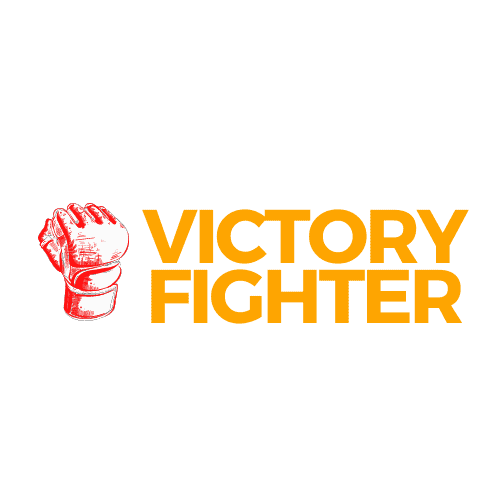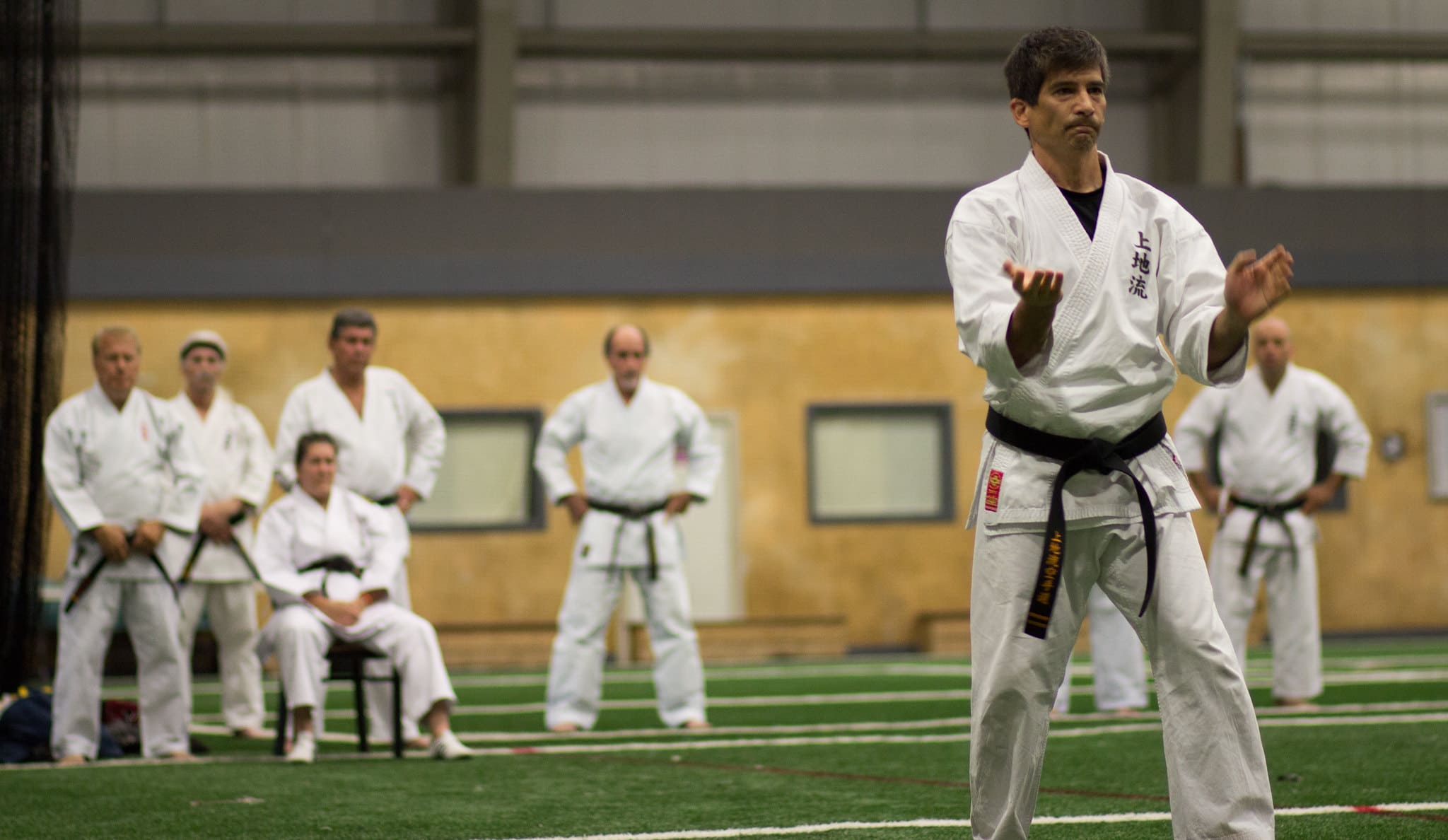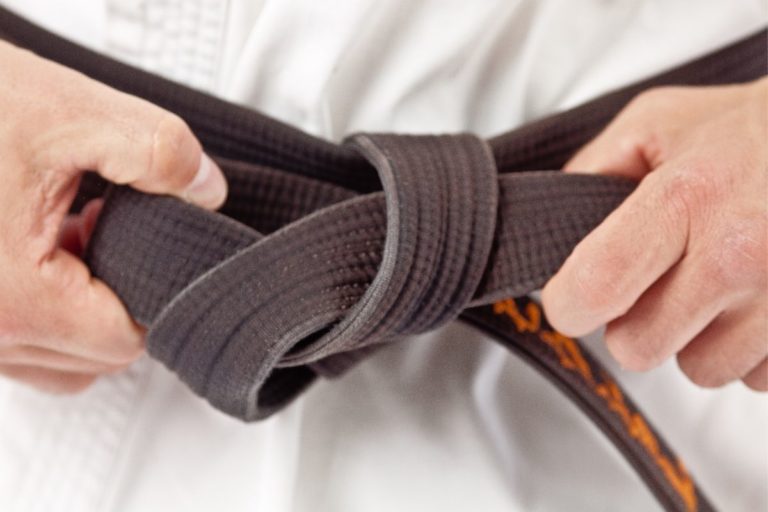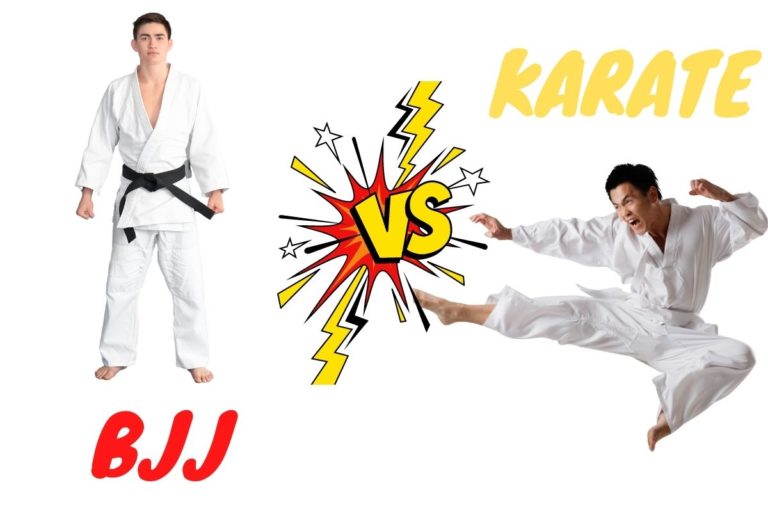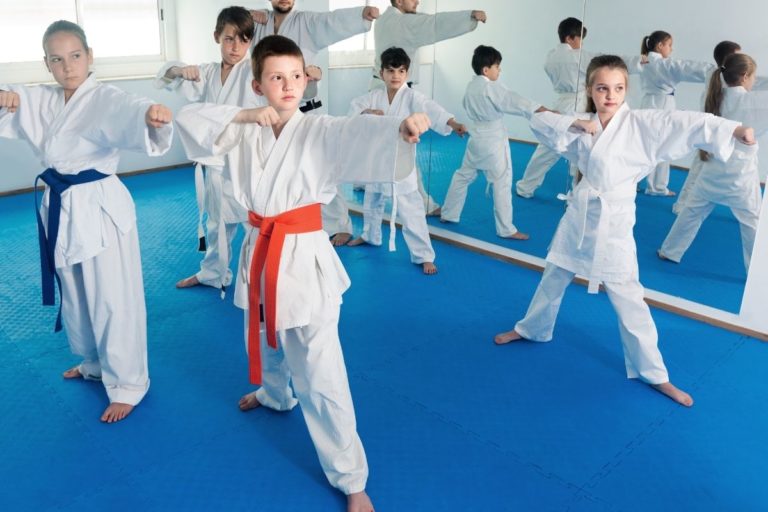Which Is the Best Karate Style for Self-Defense
There are many different styles of karate, and some karate techniques could be argued to only be mildly effective in a real-life self-defense situation. Karate has a lot of benefits other than just being good for fighting and self-defense but it is typically the main reason people start karate and other martial arts. So, today I will explain the best karate style for self-defense.
As a general rule, Uechi Ryu is the best karate style for self-defense. It has techniques that are very effective but are often not trained in other karate styles because they are illegal in sport karate. It also has a stance and a way of throwing strikes that is much better suited to self-defense.
Below, I will cover more detail about why Euchi Ryu is the best karate style for self-defense, as well as, explain the cons of some of the other more popular karate styles for self-defense. Let’s dig in.
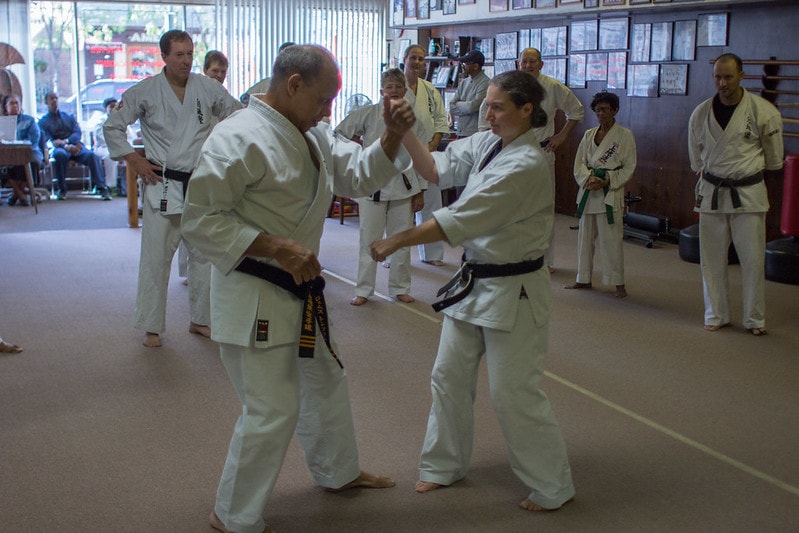
Why Uechi Ryu Is the Best Karate Style for Self Defense
The main criteria that make a karate style effective for self-defense, are the emphasis on sparring, whether they have close quarter techniques, and if they incorporate ‘dirty’ fight moves like headbutts.
It’s important to note that any style of karate can be effective for self-defense. The main limiting factor is how they are trained. For example, if a particular school does a lot of kata work, but very little sparring, then a student won’t be as prepared for a real-life street fight.
Based on all of these factors here’s a table that shows the best karate styles for self-defense:
| Style | Rank |
| Kudo, Uechi Ryu | 1 |
| Sport Karate | 2 |
| Kempo, Kyokushin, Shotokan, Goju | 3 |
| Kenpo, Wado, Shito, Shorin | 4 |
| Isshin | 5 |
As you may know, Kudo is a karate style that is a mix of judo and Kyokushin karate. Therefore, it has many of the effective throws and groundwork of judo. As well as, the strikes of karate. For this reason, it also ranked as one of the best karate styles for self-defense. The main criticisms of the other karate styles are:
- The stance and way of throwing strikes
- The lack of close-quarter fighting techniques, such as throws
- Effective techniques like headbutts aren’t trained
The common way to throw strikes in karate is to keep one hand at the waist in a clenched fist. This is suboptimal for self-defense because it leaves the entire right side of your face, body, and neck open.
Euchi Ryu on the other hand has a stance where both hands are out in front of you close to your face, and in an open position. Here’s a summary of Euchi Ryu by a black belt in Karate, who has also traveled all over Japan and knowns a lot about the different styles of karate:
Some of the styles of karate that were ranked lower than Euchi Ryu and Kudo do not have a full range of techniques. For example, they don’t train strikes to the head and face. They also have a big emphasis on kata. If more time is spent training kata, then not as much time is available to train live sparring.
Kata wasn’t originally meant for fighting but has other benefits
According to Jesse Enkamp, kata was not originally developed to make a person more effective in a fight. He explains that in a period of history in Japan the economy was particularly bad, and it was very difficult to earn money. Therefore, karate practitioners would busk. Their form of busking was to demonstrate their moves to an audience and receive donations.
However, another main reason was to preserve all of the different techniques. Doing kata is a very effective way to store the martial arts knowledge in karate, and make it easy to pass from one person to the next.
Is Karate Effective for Self Defense
All martial arts have been created to be effective at fighting. However, some are clearly better than others in certain aspects, or overall. So, here’s a summary of whether karate is effective for self-defense.
In general, karate is good for self-defense. However, it depends on the specific school/dojo. There are various ways to train karate, and some will prepare a student better for self-defense than others. The main skill that will develop self-defense skills is sparring.
Some aspects of karate have limited applicability for self-defense such as kata. There are also various styles of karate and some are better than others. The two main aspects of fighting that are necessary for self-defense are striking and grappling.
Grappling can be good on its own, and striking can be good on its own. But, if a grappler can’t take a person down they need to have good striking skills. And if a striker gets into the clinch or taken to the ground they need good grappling skills.
Is Shotokan Good for Self Defense
Shotokan is a very popular style of karate. But, one criticism of some forms of karate is that they aren’t good for self-defense. So, here’s the long and short of whether Shotokan is good for self-defense.
In general, Shotokan is good for self-defense. But, it is not the best karate style for self-defense according to martial arts experts. Euchi Ryu, and Kudo, are the best styles of karate for self-defense. But, provided a person does live sparring any style of karate can be good for self-defense.
A key component of many styles of karate is sport karate which is also an Olympic sport. Sport karate and live sparring are almost identical to a self-defense situation because the other person is trying to avoid your strikes and throws, as well as, land their own. Therefore, it’s a very good way to train for self-defense.
